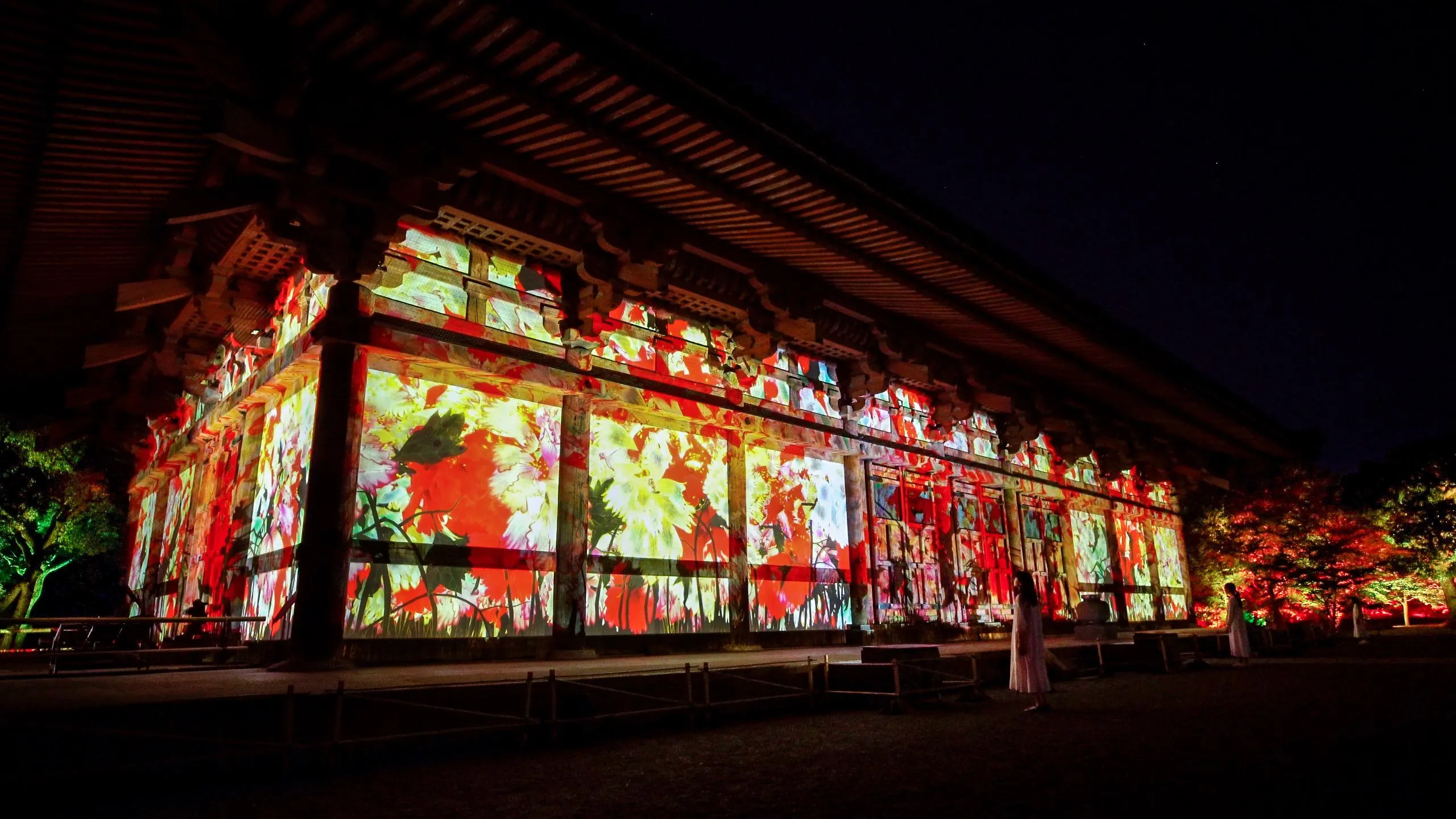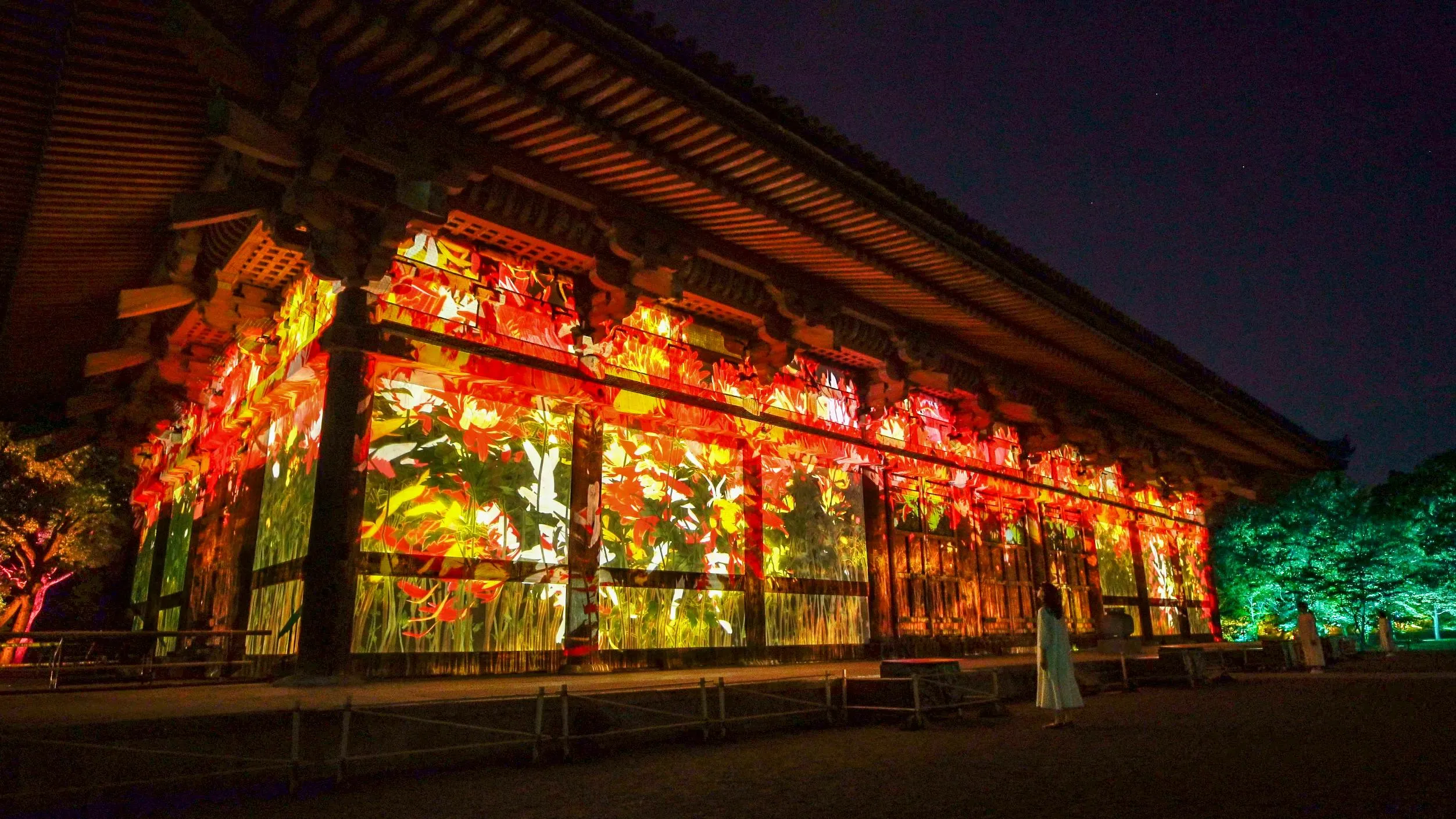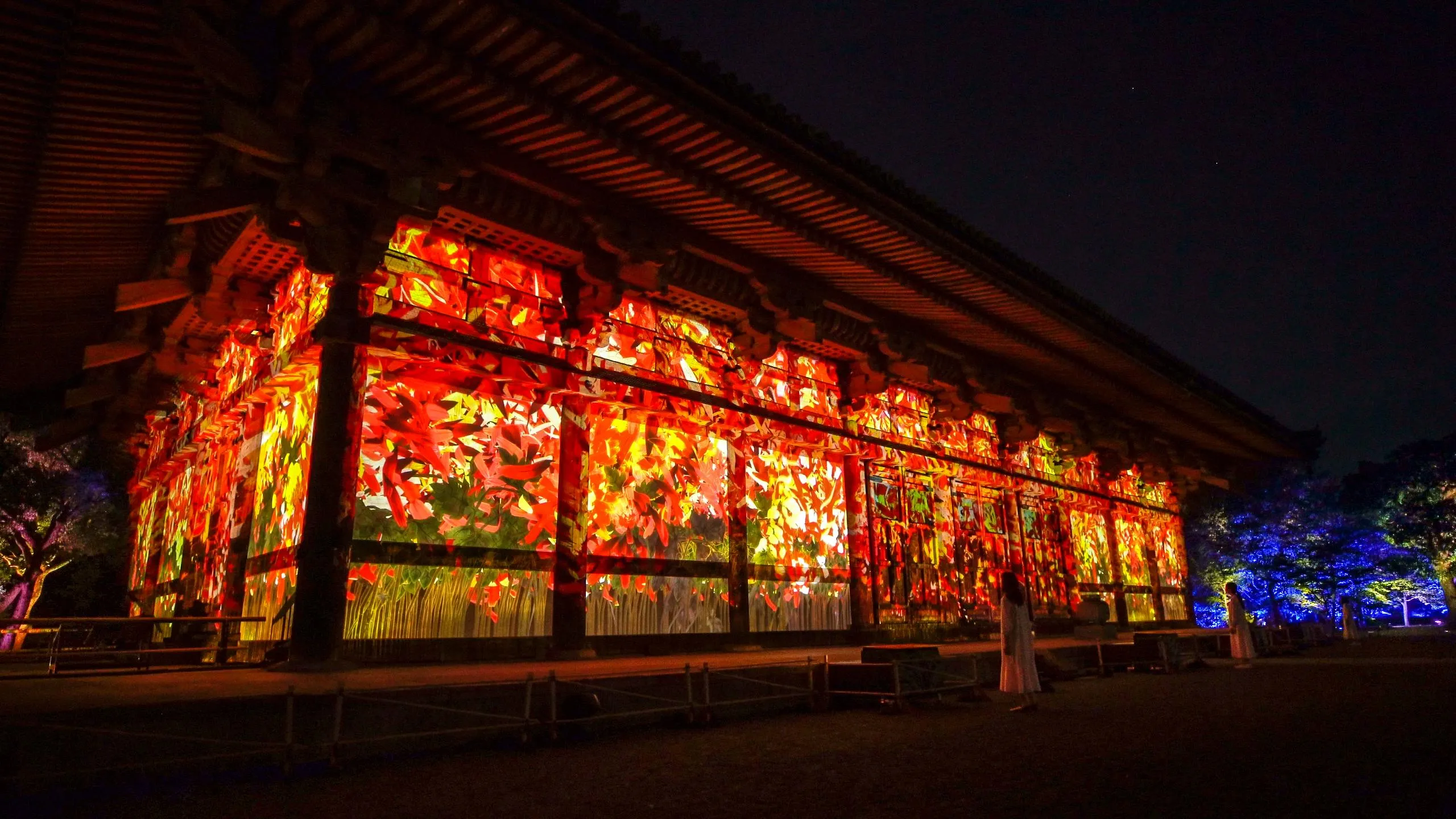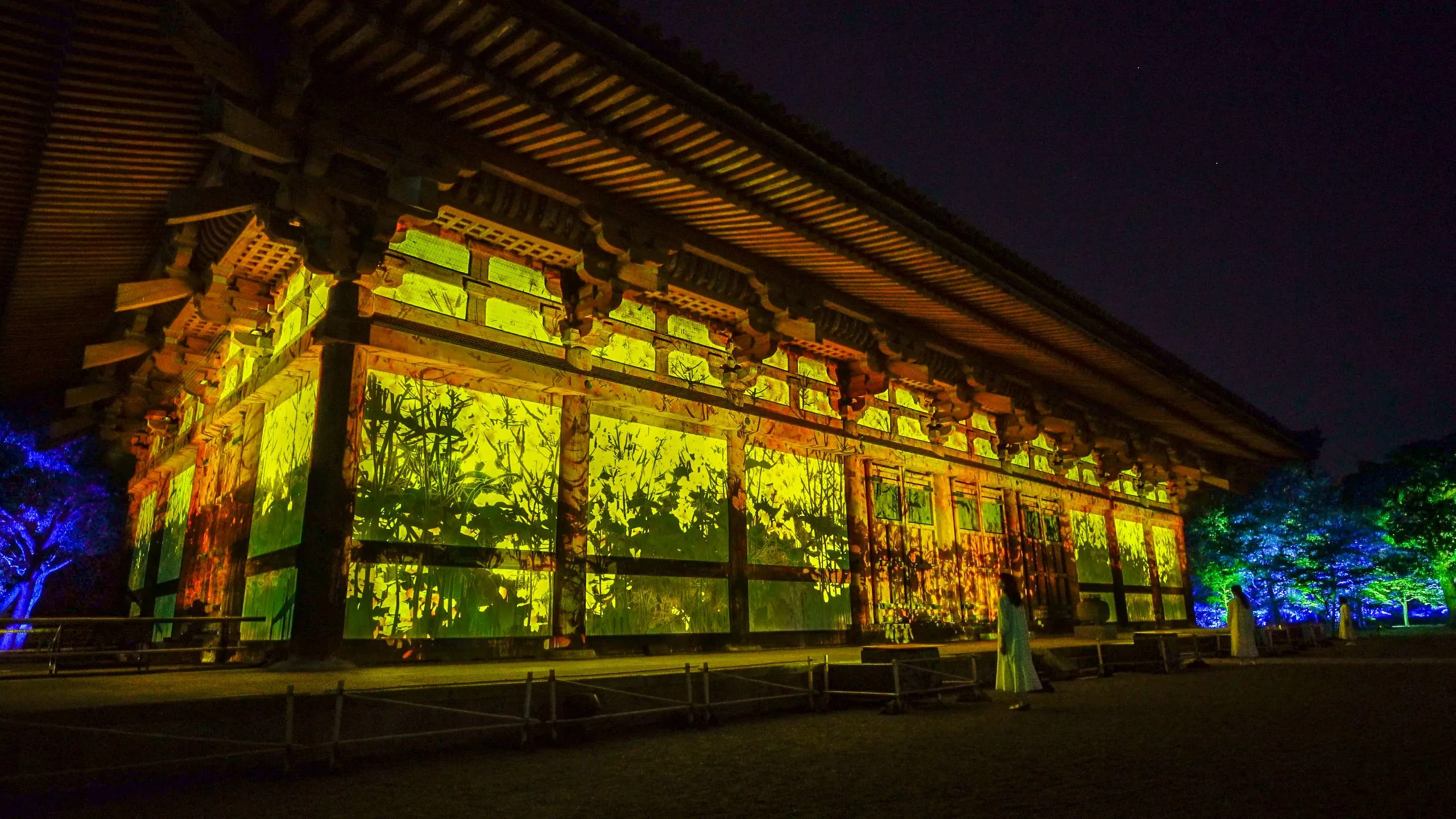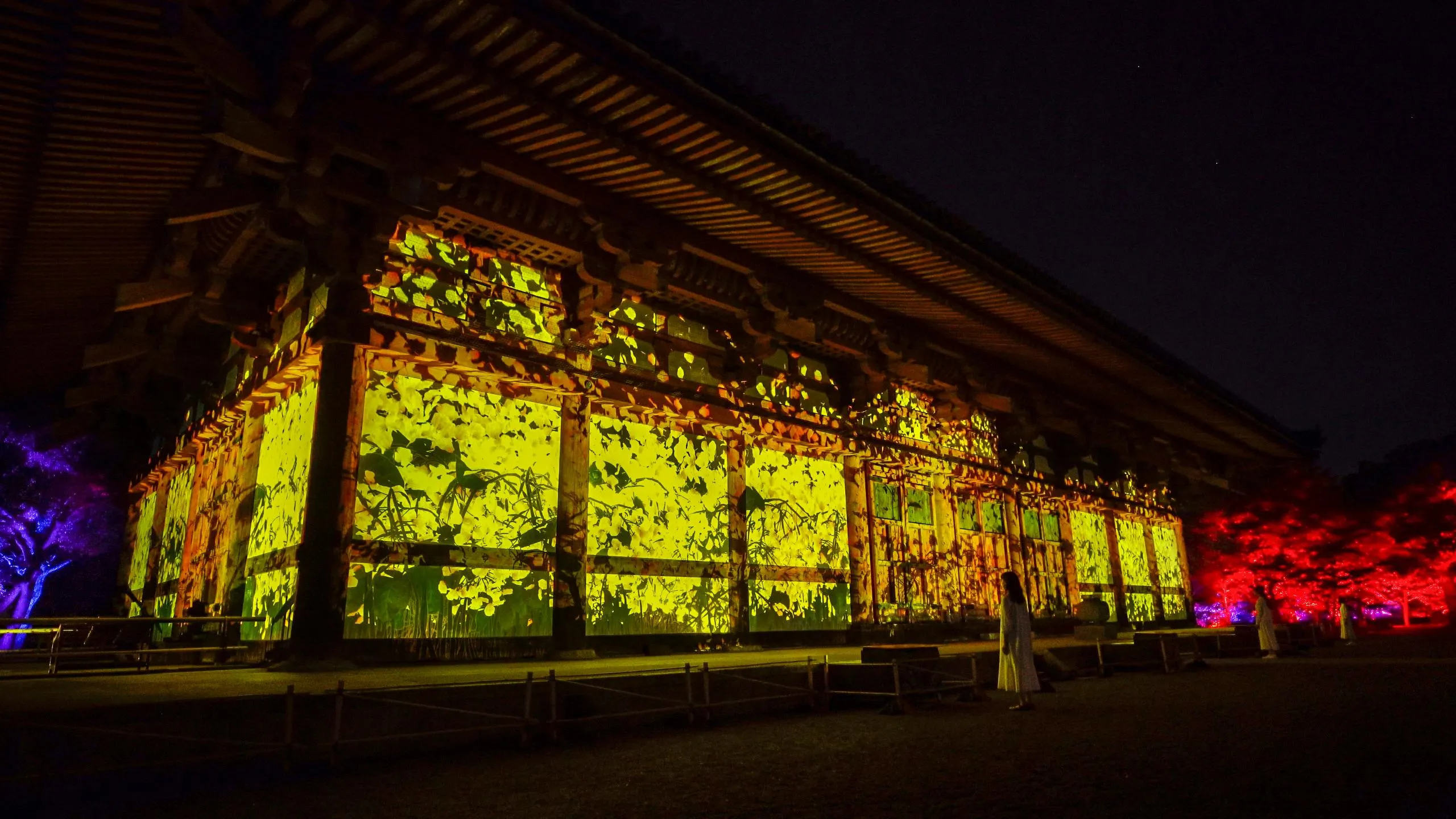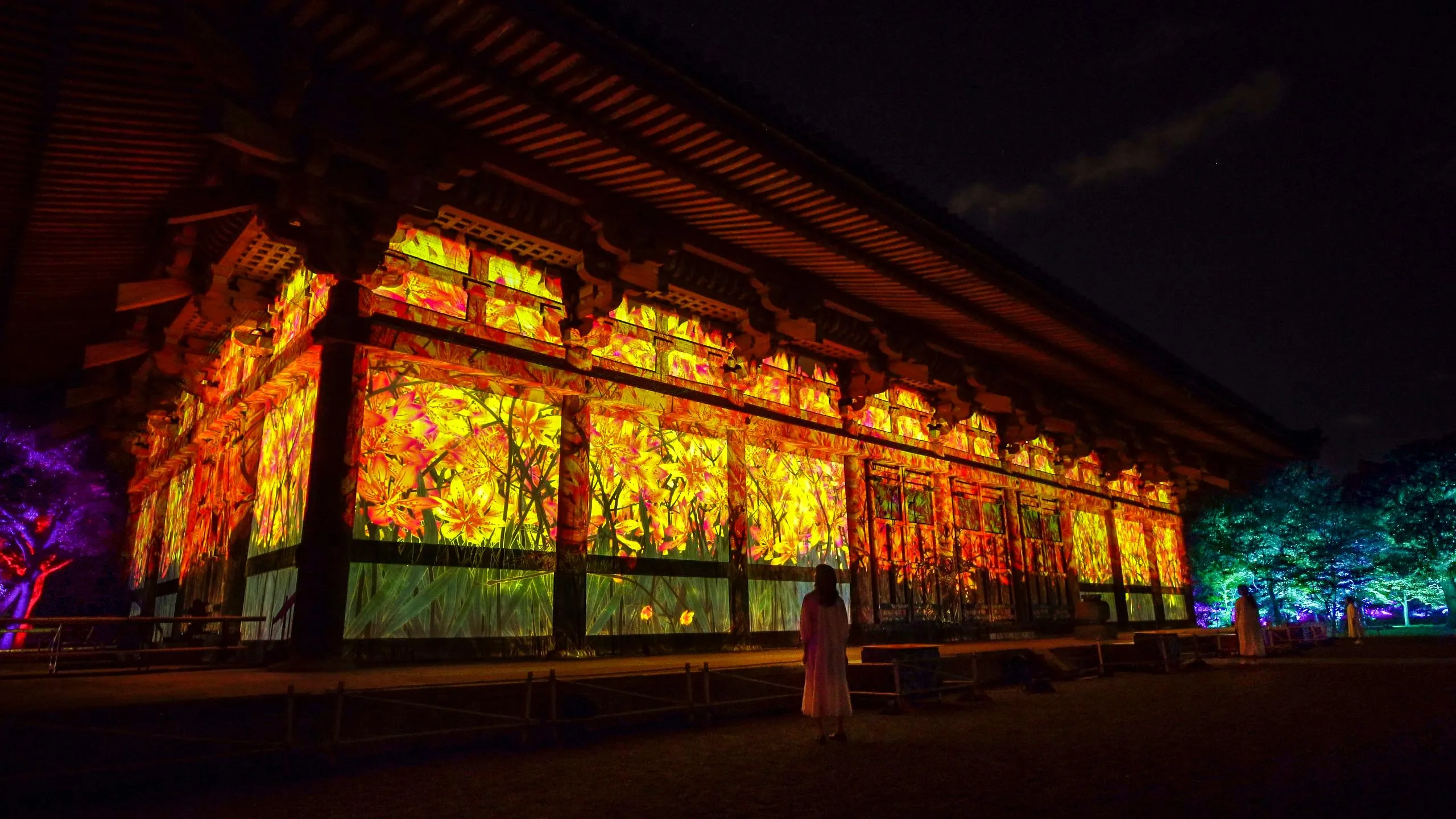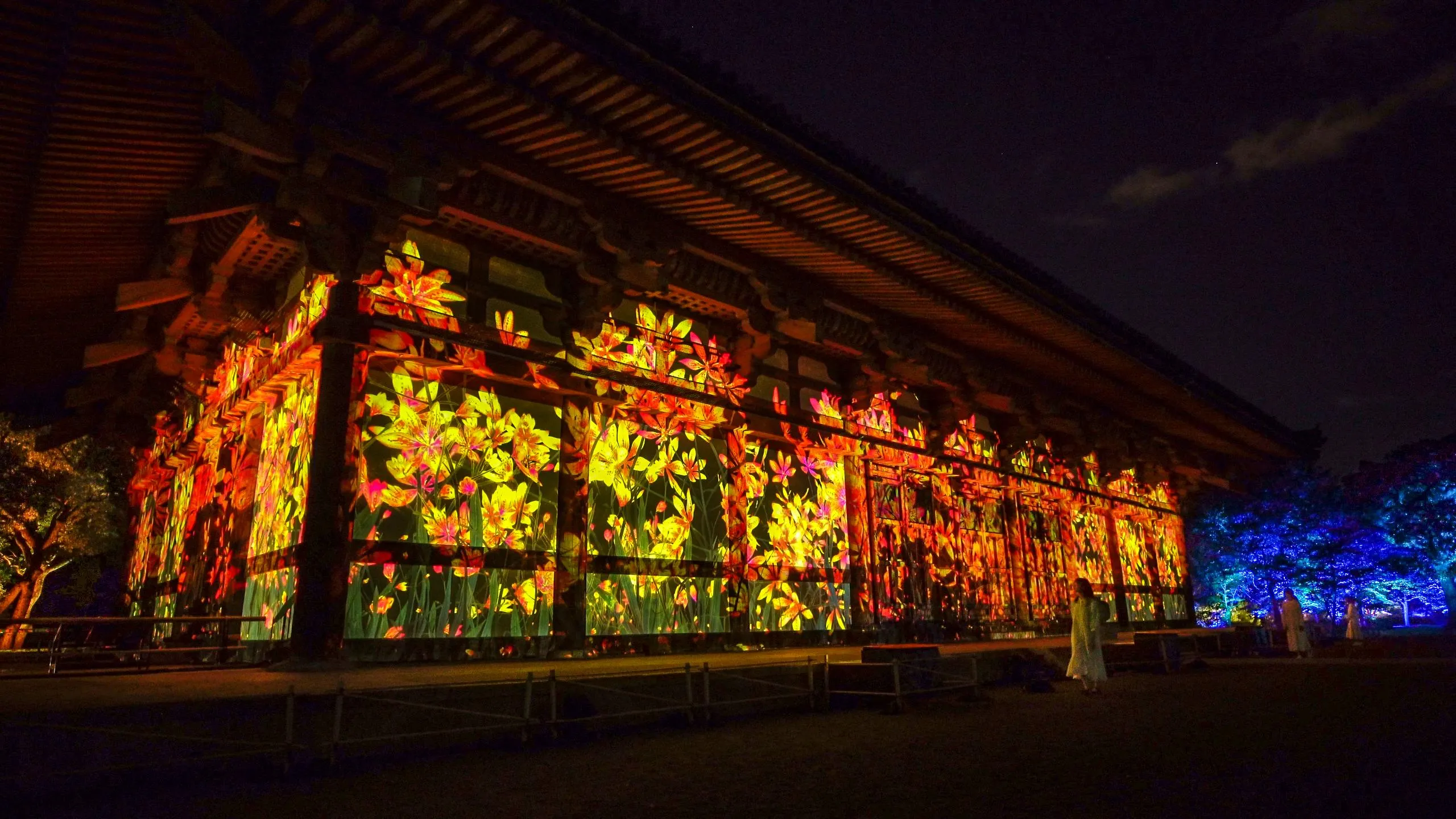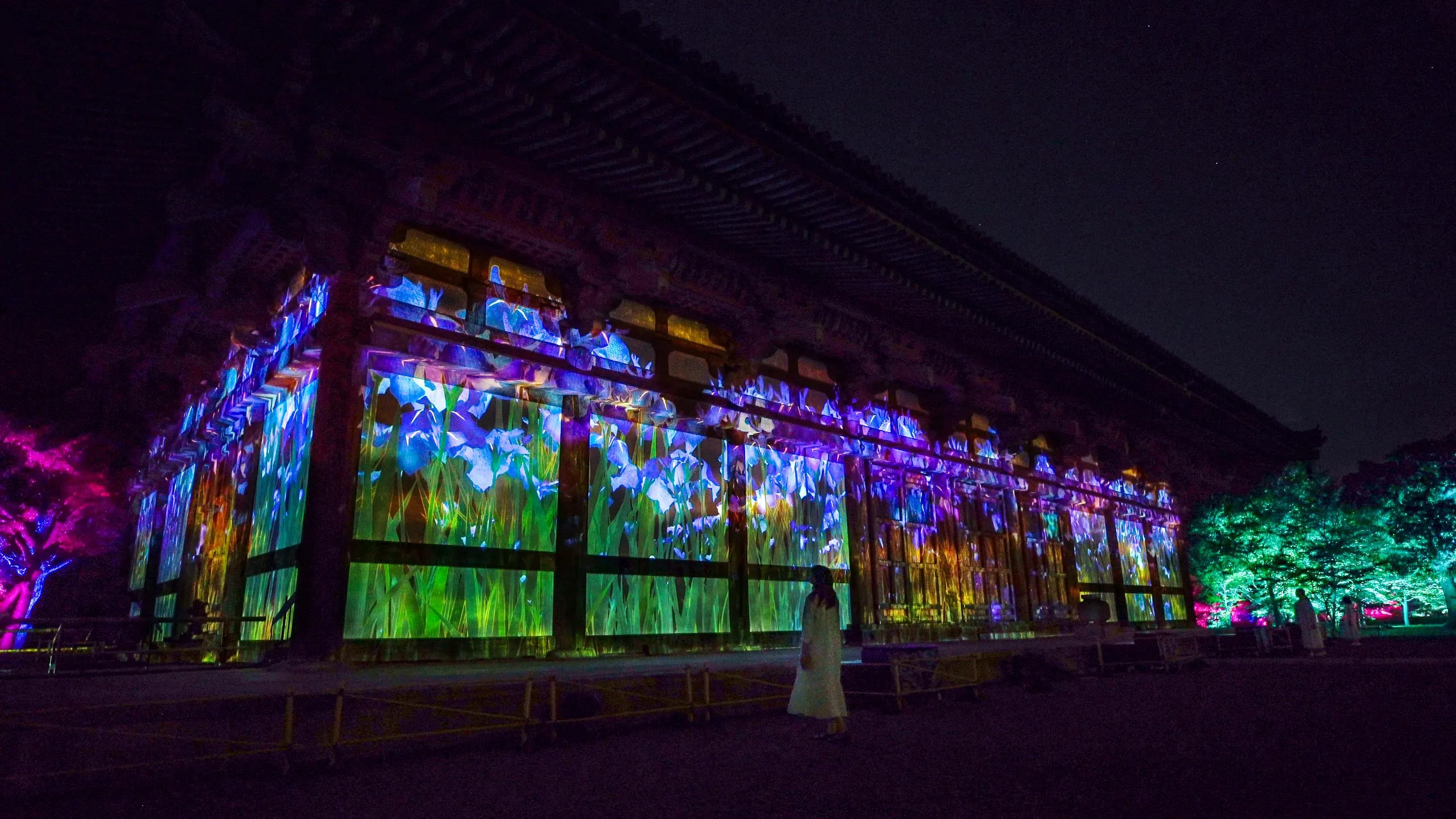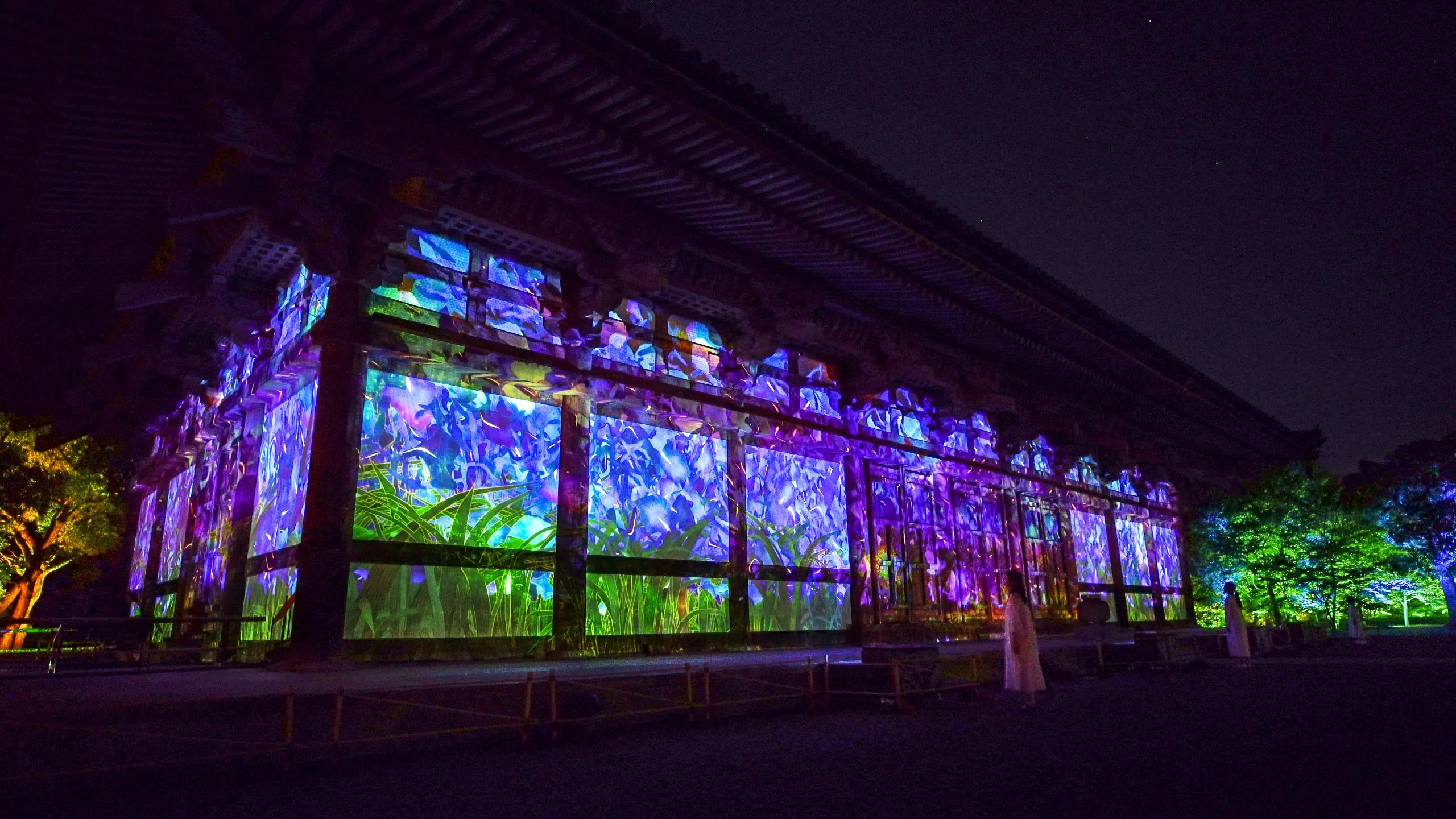Proliferating Immense Life in Toji Kodo
teamLab, 2021, Interactive Digital Installation, Sound: Hideaki Takahashi

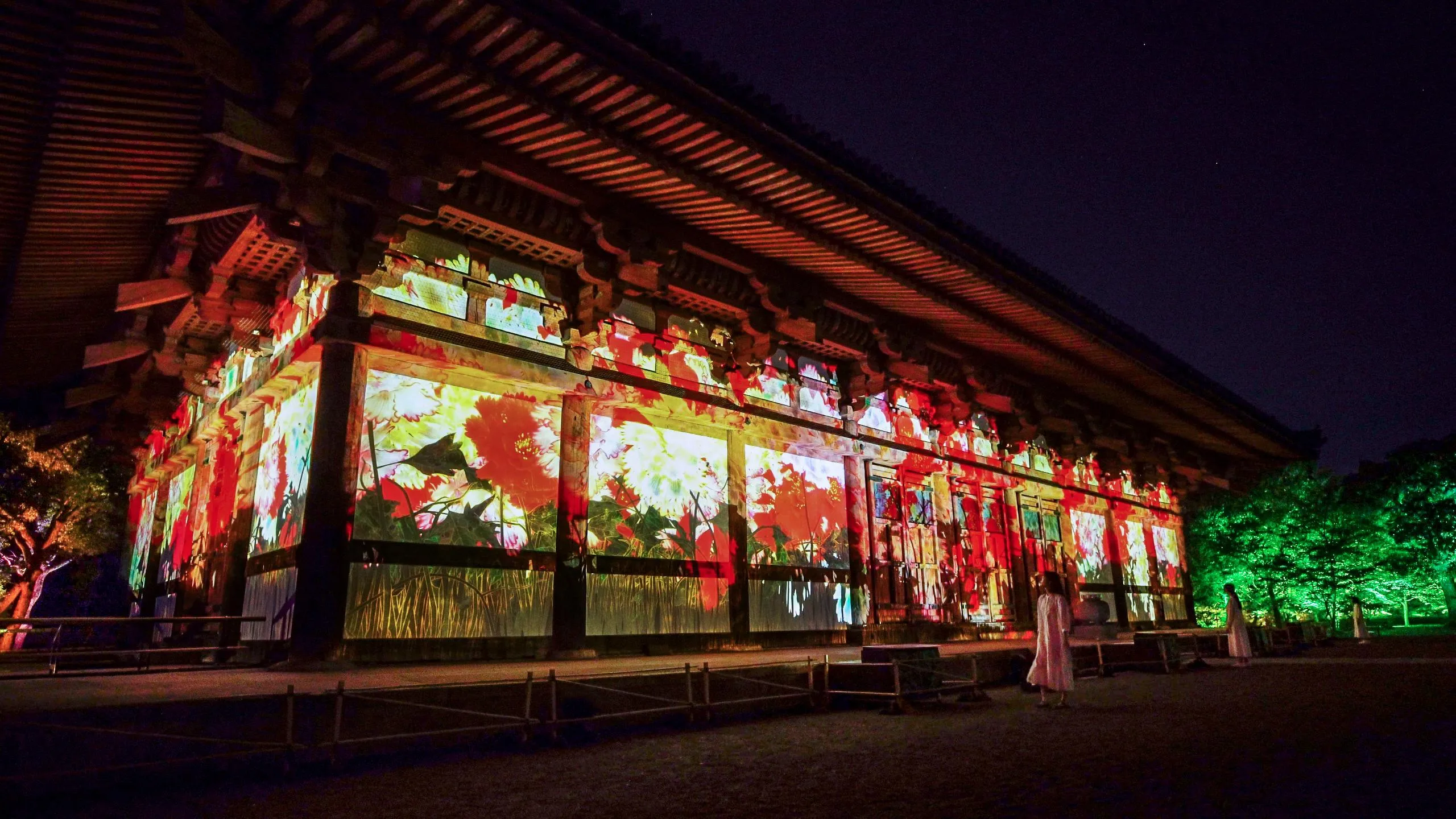
Proliferating Immense Life in Toji Kodo
teamLab, 2021, Interactive Digital Installation, Sound: Hideaki Takahashi
In 823, Kobo-Daishi Kukai, who was entrusted with the former national temple Toji Temple, decided to spread the teachings of esoteric Buddhism and positioned the Kodo
as the central building. It was built so that the center of the lecture hall would be the center of the temple area and of esoteric Buddhism.
Toji Temple was destroyed by fire in 1486 along with the Kondo and Nandaimon. While the Kondo was finally rebuilt in the Momoyama period and the Nandaimon in the Edo period, the Kodo was rebuilt five years after the fire with the highest priority.
In the Kodo, the flowers’ cycle of growth repeats itself in perpetuity. When too many flowers grow, they scatter and fade all at once.
When people touch them, the flower petals scatter and fall away.
The artwork is not a pre-recorded image that is played back: it is created by a computer program that continuously renders the work in real time. The interaction between people and the installation causes continuous change in the artwork: previous visual states can never be replicated, and will never reoccur. The picture at this moment can never be seen again.
as the central building. It was built so that the center of the lecture hall would be the center of the temple area and of esoteric Buddhism.
Toji Temple was destroyed by fire in 1486 along with the Kondo and Nandaimon. While the Kondo was finally rebuilt in the Momoyama period and the Nandaimon in the Edo period, the Kodo was rebuilt five years after the fire with the highest priority.
In the Kodo, the flowers’ cycle of growth repeats itself in perpetuity. When too many flowers grow, they scatter and fade all at once.
When people touch them, the flower petals scatter and fall away.
The artwork is not a pre-recorded image that is played back: it is created by a computer program that continuously renders the work in real time. The interaction between people and the installation causes continuous change in the artwork: previous visual states can never be replicated, and will never reoccur. The picture at this moment can never be seen again.

